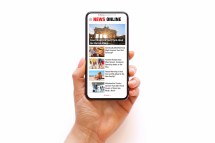Ruter is a comprehensive public transport system in Oslo, Norway, that includes buses, trams, subways, and ferries. Whether you are a local resident or a visitor to the city, knowing how to navigate Ruter effectively can save you time and make your travel experience much more convenient. In this article, we will share some tips and tricks for maximizing Ruter’s efficiency.
Understanding the Ruter Network
Before diving into the tips and tricks, it’s important to have a basic understanding of the Ruter network. The system consists of different modes of transportation that operate within specific zones. Zones are categorized based on distance from the city center, with Zone 1 being closest and Zone 4 being farthest.
The network is well-connected, allowing passengers to transfer seamlessly between buses, trams, subways, and ferries using a single ticket or travel card. It’s worth noting that Ruter operates on a cashless system where tickets can only be purchased using their mobile app or travel card.
Plan Your Journey in Advance
One of the best ways to maximize Ruter’s efficiency is by planning your journey in advance. The Ruter mobile app is an indispensable tool for this purpose. With real-time information on routes, schedules, and disruptions, you can easily plan your trip down to the minute.
The app also provides alternative routes in case of delays or closures. By checking for any updates before heading out, you can avoid unnecessary waiting time at stations or stops.
Take Advantage of Travel Cards
If you’re planning to use public transport frequently during your stay in Oslo or if you’re a local resident who regularly relies on Ruter services, investing in a travel card can significantly enhance your efficiency.
Ruter offers several types of travel cards depending on your needs. The most popular option is the “Ruter Reisekort,” a rechargeable card that allows unlimited travel within selected zones for a specified period. This option is particularly beneficial for commuters or those who frequently travel between specific areas.
For occasional visitors, the “Ruter Billett” card is a good choice. It offers single-use tickets that can be loaded onto the card and used as needed. This eliminates the need to constantly purchase tickets and saves time during your journey.
Embrace Alternative Modes of Transport
While buses and subways are commonly used by Ruter passengers, Oslo’s unique geography offers an additional mode of transport that shouldn’t be overlooked – ferries. Taking advantage of the ferry system can not only provide a scenic experience but also save time when traveling to certain destinations.
For example, if you’re heading to the Bygdøy peninsula, instead of taking a bus or tram, consider hopping on one of the ferries departing from Aker Brygge. The ferry ride not only offers beautiful views of Oslo’s coastline but also cuts down travel time significantly.
In conclusion, maximizing Ruter’s efficiency involves understanding the network, planning your journey in advance using the mobile app, utilizing travel cards for convenience and cost savings, and embracing alternative modes of transport like ferries when appropriate. By following these tips and tricks, you’ll navigate Oslo’s public transport system with ease and make the most out of your time in this vibrant city.
This text was generated using a large language model, and select text has been reviewed and moderated for purposes such as readability.






